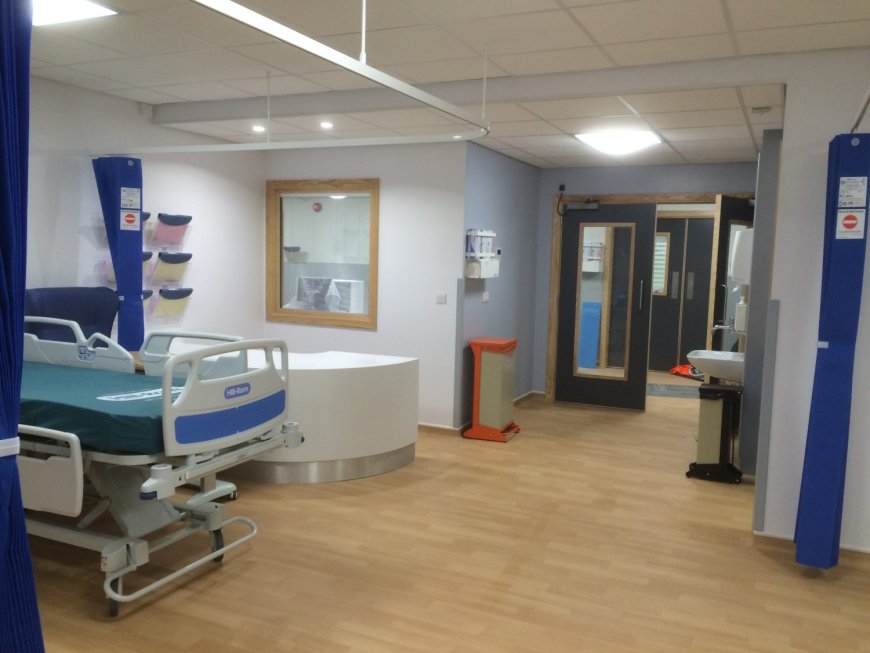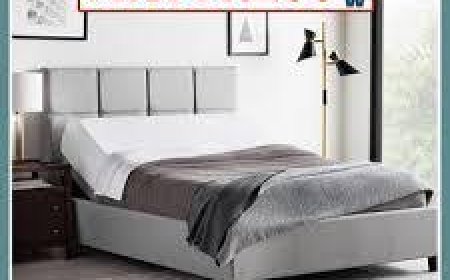Modular Healthcare Buildings: It's Benefits!
You might already know how widely used modular buildings are, but have you ever wondered why? Below are top benefits of modular buildings in the medical field.

The demand for healthcare services is growing fast, and with it, the need for quick, flexible building solutions. That’s where modular healthcare buildings come in. These innovative structures are popping up around the world, offering a faster, more affordable way to create spaces for medical care. Not only do they save time and money, but they’re also eco-friendly and highly adaptable. Here’s a closer look at modular healthcare buildings and the benefits they bring to healthcare providers, patients, and communities.
1. What Are Modular Healthcare Buildings?
Modular buildings are made up of sections called “modules,” and are constructed in an off-site facility. These modules are then transported to the building site and put together, almost like puzzle pieces. In the case of healthcare, these modular buildings can be used as hospitals, clinics, diagnostic centres, or even temporary emergency rooms.
The flexibility of modular construction allows healthcare facilities to quickly expand, adapt, or relocate as needed. Plus, they meet the same safety and regulatory standards as traditional buildings, so quality and safety aren’t compromised.
2. Speedy Construction
One of the biggest benefits of modular healthcare buildings is speed. Because construction happens off-site in a controlled environment, the process is faster than building on-site from scratch. Modular buildings can be constructed 30-50% faster than traditional buildings, with some projects completed in as little as a few weeks.
This speed is critical in healthcare, where demand for space can change rapidly. During the COVID-19 pandemic, for example, modular healthcare buildings were used to quickly set up extra facilities and testing centres. Being able to respond quickly to emergencies or growing patient needs makes modular buildings a lifesaver for healthcare providers.
3. Cost-Effective Solutions
Building new facilities from scratch is expensive, especially for healthcare, where budgets are often tight. Modular buildings offer a cost-effective alternative. Since construction happens off-site, there’s less need for on-site labour, which can cut down on costs. Also, because modular buildings go up so quickly, labour and construction costs are lower overall.
This affordability can be a huge help for smaller healthcare providers, rural hospitals, or organizations that need to expand but don’t have a massive budget. Lower costs mean that more resources can be put toward patient care, staff, and medical equipment, which improves overall service quality.
4. Flexibility and Customization
Modular healthcare buildings aren’t “one-size-fits-all.” They can be customized to meet the specific needs of each healthcare provider. From operating rooms to examination rooms and waiting areas, modular designs can be tailored to match the demands of different types of care.
This flexibility is great for healthcare providers with changing needs. For example, a clinic might need extra space for seasonal health services like flu shots, or a hospital might need more isolation rooms during a virus outbreak. Modular buildings allow for easy expansion, reconfiguration, or even relocation without the hassle of major renovations or new construction.
5. Minimal Disruption to Existing Facilities
Traditional construction can be disruptive, especially in a busy healthcare setting. With constant noise, dust, and the need to restrict certain areas, building on-site can create an inconvenient environment for patients, staff, and visitors.
Modular buildings are different. Since the majority of construction takes place off-site, there’s much less disturbance on-site. The modules are simply delivered and assembled, which is quicker and less disruptive. This approach allows healthcare facilities to continue operating smoothly, providing care without the interruptions that usually come with construction projects.
6. Eco-Friendly and Sustainable
Sustainability is a growing priority for all industries, and healthcare is no exception. Modular buildings are more eco-friendly than traditional construction for a few reasons. First, building in a factory setting reduces waste. Materials can be reused, and production can be managed to minimize waste and pollution.
Modular buildings also use less energy overall, both in the building process and over time. They are designed to be energy-efficient, using advanced insulation and materials that help reduce heating and cooling costs. Plus, modular buildings can be easily expanded, reduced, or moved, which means they’re less likely to end up as waste compared to fixed structures.
7. High-Quality Construction
A common misconception about modular buildings is that they’re somehow lower quality than traditional buildings. However, because modular buildings are made in controlled factory environments, they are often held to even higher standards. Every module is rigorously tested and inspected to ensure it meets strict healthcare codes and quality standards.
Modular buildings are designed to withstand harsh environments and heavy use, just like traditional buildings. For healthcare, this means durable, cleanable surfaces, well-ventilated spaces, and the right materials to support infection control.
8. Easy Expansion and Adaptation for the Future
The healthcare industry is always evolving. Whether it’s new technology, treatments, or patient needs, healthcare facilities need to adapt over time. Modular buildings make it easy to grow or change with these demands. Adding more rooms or updating the layout is simple with modular buildings, often requiring just a few adjustments instead of a complete overhaul.
If a clinic or hospital needs to expand or shift focus, modular construction offers a flexible solution without the need for costly renovations. If a facility needs to relocate, the modular structure can be disassembled and moved to a new site, saving time and resources.
Conclusion: A Smart Choice for Modern Healthcare
Modular healthcare buildings are transforming how we think about medical facilities. By combining speed, affordability, flexibility, and sustainability, they offer an ideal solution for the growing and changing needs of the healthcare industry.
These modular structures allow healthcare providers to react quickly to demand, create customized spaces, and avoid the high costs and disruptions of traditional construction. Whether it’s a large hospital or a small clinic, modular buildings provide a smart, efficient way to serve patients and communities better.
In short, modular healthcare buildings are more than just “quick builds” – they’re innovative spaces designed for quality care, designed to be flexible, and designed to make a positive impact on both healthcare providers and the environment.
What's Your Reaction?




















![Microsoft PL-900 Exam Dumps: Pass With Guarantee [2024]](https://news.bangboxonline.com/uploads/images/202410/image_430x256_6704d32dec506.jpg)
